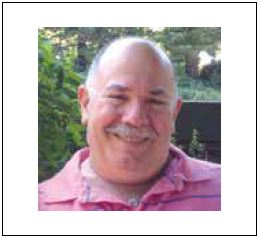 By Dr. Bill Lipsky–
By Dr. Bill Lipsky–
More has been written about Andalusian poet, musician, playwright and artist Federico García Lorca than any Spanish author except Miguel de Cervantes, who had the advantage of a 300-year head start. Lorca remains the most translated Spanish writer of all time, the author of Don Quixote included. His lyricism, clarity of language, and his genius to create visual, surreal images all allow us to experience the psychology of our surroundings and, at the same time, understand ourselves in a world that is ever more isolating and depersonalized.
The great Cervantes published Don Quixote when he was fifty-eight years old. García Lorca’s first book, Impresiones y Viajes/Impressions and Landscapes, appeared in 1918 when he was just 19. El Maleficio de la mariposa/The Butterfly’s Evil Spell, was staged in 1920. He published Libro de poemas/Book of Poems the next year. In 1928, his poems based upon Spanish folklore, Romancero gitano/Gypsy Ballads, made him famous throughout the Hispanic world. Saturated with mythic and sexual allusions, the work combined modern poetic imagery with traditional literary forms to startling, new effect. He was 30 years old.
In June 1929, when the decade’s avant-garde writers and painters dreamed of living and working in Paris or Berlin, García Lorca went instead to New York, spending nine months wandering in the “maddening, boisterous Babel.” He gave different reasons for his choice. To one friend he wrote that he was going because he could not think of a worse place to visit. To another he said it was to study with a former professor and friend, then at Columbia University. A third possibility: the city’s reputation as a gay mecca. Greenwich Village was already a gay neighborhood and the speakeasies of Times Square were “notorious hangouts” for men who wished to find each other. He simply may have wanted, after two recent, failed relationships with men he loved in Spain, to explore his sexual self with an openness not available to him in his native land.
In New York, García Lorca entered the world of the gay avant-garde and began expressing his homosexuality in his writing. He made friends, attended parties, and entered into a love affair with an American student living in Vermont whom he had met in Madrid. Harlem became his favorite part of the city. He discovered African-American spirituals—which reminded him of Spain’s “deep songs”—went to church services, black music revues, jazz clubs, and events at the Rockland Palace, Harlem’s biggest dance hall, which hosted huge and lavish drag balls.
The result of his stay was Poeta en Nueva York/Poet in New York, completed in 1930, published posthumously ten years later, which showed how the city had altered his vision of poetry, the theater, and the social role of the artist. Its surrealism, imagery, free verse, and themes of urban decay and social injustice invoked a place very different from the New York of Walt Whitman, whom he described in his thickly homoerotic “Ode to Walt Whitman.” A departure from his earlier works, it became a pathbreaking, defining work of modern literature that changed the direction of poetry on three continents.
Where the Good Gray Poet saw a nation of lovers and comrades in “cohesive” relationships, García Lorca found an America of heartless cities that created dehumanizing isolation and emotional disorientation. With intense lyricism, he expressed his dismay at the “mountains of coal, billboards, and railroads,” the “mire and death.”
Agony, agony, dream, ferment, and dream.
This is the world, my friend, agony, agony.
Bodies dissolve beneath city clocks…
And life is neither noble, nor sacred, nor good.
Returning home in 1930, García Lorca continued his success with plays such as Bodas de Sangre/Blood Wedding, poetry collections, and other major works. When the Spanish Civil War began in 1936, he was arrested by Fascist soldiers loyal to Francisco Franco, who took him into the countryside and assassinated him. There had been no trial or even a formal accusation of wrongdoing. The details of his death are unknown, although biographer Ian Gibson wrote that among his murderers was one “who boasted later that morning in Granada that he had just helped to shoot Lorca, firing, for good measure, two bullets into his arse for being a queer.” He was 38 years old.
His last words and final thoughts are unknown, but he once stated, “As I have not worried to be born, I do not worry to die,” so perhaps his closing moments were emotionally and spiritually peaceful. After his death, Chilean poet and Nobel laureate Pablo Neruda wrote a penetrating description of García Lorca’s tragic loss and enduring appeal:
I have never seen grace and genius, a winged heart and a crystalline waterfall, come together in anyone else as they did in him…His was a magnetic joyfulness that generated a zest for life in his heart and radiated it like a planet.
No one expressed humanity’s misfortune, however, better than García Lorca himself. Mourning the death of his dear friend in Llanto por Ignacio Sánchez Mejías/Lament for Ignacio Sánchez Mejías, he wrote what easily could be his own epitaph:
It will be a long time, if ever, before there is born
an Andalusian so true, so rich in adventure.
I sing of his elegance with words that groan,
and I remember a sad breath through the olive trees.
Bill Lipsky, Ph.D., author of “Gay and Lesbian San Francisco” (2006), is a member of the Rainbow Honor Walk board of directors.
Recent Comments